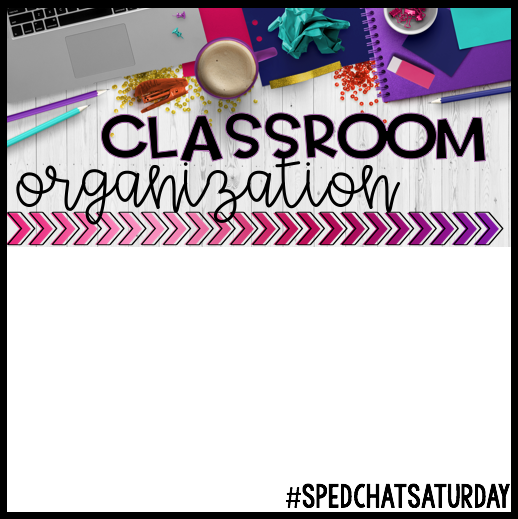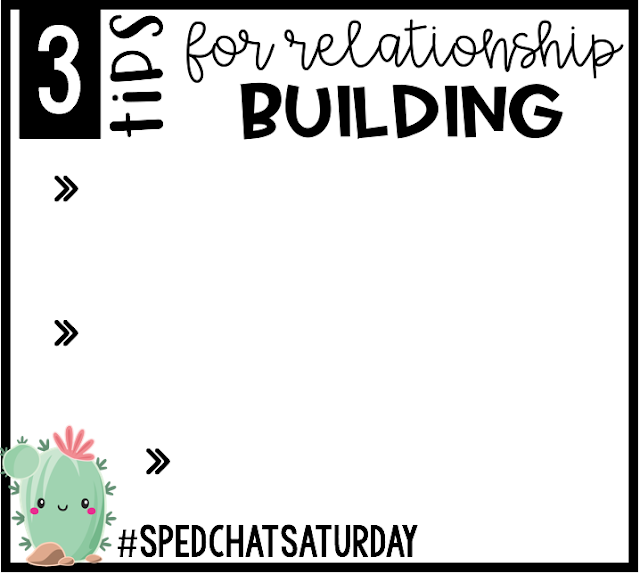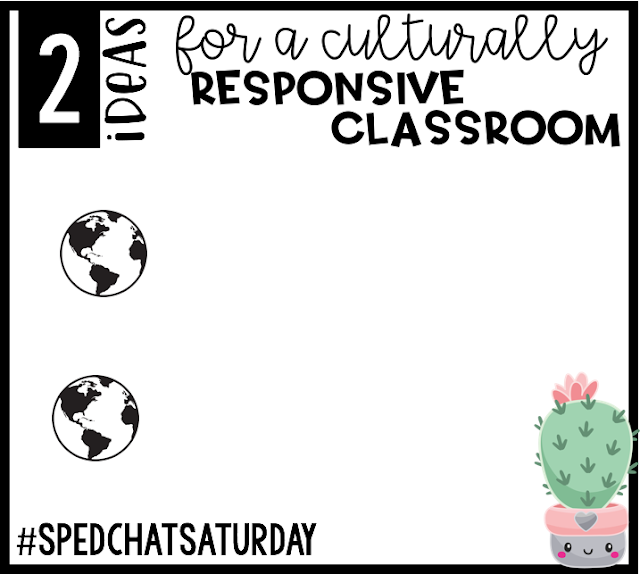This post has seriously been sitting in my drafts for a year. Like, what was I thinking?! #facepalm
Something about me that you might have not learned yet is that I am blunt and raw in what I do and say. I think the kids say, "Keepin' it real." These tips might make you feel a little insecure if you have been avoiding doing these things, but that's why you're here. To learn and grow from someone else's mistakes and realizations. So, take these tips like a CHAMP.

1. QTIP - Quit Taking it Personal
If I had a nickle for everytime I told myself "QTIP" this past school year, I would have enough money to pay off my student loans and then go to Hawaii...for like a year. Seriously. From being called racist, fat, and having objects thrown at me -- keeping my composure has taken serious skill and practice. We are human and naturally we feel attacked when the little bit of power we feel we have (as teachers), gets taken away by a student who has no idea how hard we work for them or who we even are. Well, get over it. #1 the student doesn't know you personally, they only know you as their teacher. #2 Thick skin is not optional in teaching. Don't let it wear you down or make you upset. And remember. Behavior is NOT personal. You're not the cause of the behavior, just an outlet to gain a desire, need, or want. It's just what the student knows how to do.

2. Separate your "Teacher Heart" from your "Real Heart"
This basically goes along with #1, but I felt like it deserved its own number. You are not a miracle worker (well, I'm sure some of you are), but most of us just aren't. Building classroom community and trust within your students takes time, effort, consistency, and a lot of coffee and diet coke (that's probably just me?), but at the end of the day, we all do what we can and sometimes the payoff won't show for awhile. Be patient with yourself but challenge yourself to learn new strategies and try new ideas with different students when something is just not working. But, at the end of the day don't be down on yourself or feel insufficient. Teaching is your career, it's a big part of who you are, but it is not
JUST who you are. Separate these the best you can.

3. START TRACKING (Specific Behaviors)
Yeah, I'm talking about data. YOU JUST HAVE TO DO THIS. If you have someone on your campus who specializes in behavior (normally the psychologist if you don't have any special education teachers or a behavior interventionist who does), use them as a resource; however, bring some information with you. Come with check lists, tallies, observation notes, something. You can't effectively manage problem behaviors if you cannot identify what exactly they are, what is triggering them, and what the payoff is for the student.
Here's some examples of specific vs. nonspecific behaviors:
-Specific: Time off task during writing, shouting out in class, hitting self or objects
-Non-specific: Isn't doing anything, talks a lot, angry, aggressive
If you're able to identify the behavior, you can the find ways for students to receive what their behavior is getting them...
in different ways that are more appropriate and socially acceptable.
Sensory: Provide more breaks time or utilize sensory objects for a specific amount of time, allow them to sit on the floor and work, stand up and work, walk around the classroom twice
Escape: Shorten the assignment, have the student circle 5 problems he/she will do, "chunk" the assignment into manageable sections, differeniate assignment if too easy/hard, allow them to work separately
Attention: Provide them with mostly positive attention from you and incorporate cooperative learning structure where they get to collaborate with peers, allow them to tell the class a joke at the end, give them a special job where they are recognized by their peers, utilize a choices > consequence flow map (How my behavior leads others to look at me differently and how a different behavior would lead others to look at my choices more positively - the student sees how although they are receiving attention, yelling at another student and screaming is not going to want them to be your friend). This is especially effective with middle school girls with Opositional Defiance Disorder or ADHD, it also works with boys though too. Most general education students who are a challenge for you, are most likely receiving attention from you or their peers. If it's from you...remove your attention. This is when planned ignorance comes in handy but you have to be careful with this one with special needs students as they will generally escalate.
Tangibles: Offer a "first this, then this" system, preferred activity time for meeting a certain amount of points a day or stickers or stars, classroom economy system, and goodies the child likes. This is often the easiest to plan for, the other take a little more time and patience.
I also consider "control" to be listed under Tangibles. For this student, the most choice is to provide them with...a choice. Put the control back in their hands to some extent and allow them to feel "powerful."
This is not a complete list whatsoever, but I think it will give you a place to start if you're not familiar with Functional Behavior Assessments or Behavior Intervention Plans. I plan on posting about those separtely later down the road.
So like I mentioned, track the data, see what you're working with, determine the "function" of what the student gets with the undesirable behavior, and give them another outlet to receive what they're after.
TIP: You cannot just make behaviors go away, you have to learn to modify them and make them socially appropriate. So, saying that you don't want to do any of these isn't going to work. Whatever behavior you are trying to take away (modify), you have to replace with something else that is socially appropriate, easy to do, and provides the SAME function. There is no just getting rid of challenging behaviors without negotiating the terms. After time the child may grow out of it, but for now, plan on replacing the behavior, not trying to stop it away by yelling at them and taking away recess (not a good idea to do all the time by the way).

3. AVOID a Power Struggle
I've been in so many classroom and I have seen this so often in my short time of teaching.
Quit. Engaging. In. Power. Struggles. With. KIDS.
You will lose every time.
This is one of the top 3 things I tell myself during my morning pep talk in the car.
Sometimes the best thing to say, is actually nothing at all, especially when you feel your skin boiling. It's okay to pause and breath. For example, I had a 7 grade student who would cuss at me quite frequently and when I ignored it, and then addressed it later, I found it to be much more successful. Why? Because addressing the behavior right then and there, gave her that much more attention from peers AND myself. This might sound crazy, but if it isn't physical or dangerous, usually it's okay to ignore it for the time being and move on if you have to, to avoid a power struggle. Or, what I normally do is, simply restate one of your classroom expectations (the one the student is not following) to redirect what the student said/did and right away keep teaching.
Simply put, do not argue with a student. Ever. Especially in the middle of a class. Do not go back and forth with them on how what they were doing is wrong while they're screaming at you. Wait on it, and address it in private when the student and you are much more calm. That doesn't mean it goes away, that just means you've removed the attention the student receives so they are less likely to engage in it. Also use this as the time to say, "I can see you might have some questions about the assignment you're not working on yet. What questions do you have, so you can get started?" They normally feel shocked that you've moved on right away. Keep this phrase in your teacher toolbox.

4. Know the ESCALATION Process
ESCALATION OF THE BEHAVIOR
The great thing about behavior is that it is generally very predictable. The best time to teach a replacement behavior or appropriate problem solving is obviously in the calm phase -- that means we must be proactive and use preventative stategies. However, I've been quite successful de-escalating studens in the Trigger - Agitation Phase and even the Acceleration Phase, but this takes time and knowing the child very well. Unfortunately, once a student has reached acceleration, the likelihood of them coming back down is not common; therefore, they are not ready to negotiate a consequence. Wait until a student has reached the recovery phase to reflect and assign a natural consequence.

5. Be Aware of YOUR Behavior.
I can not even begin to describe the many hours I've spent in classroom where teachers have asked, "Will you come observe?" I think I am supposed to be watching the student, but most of the time I'm not. I'm watching the teacher. Instead of focusing so much on what the student did ask yourself: "What did I do before this?" "How could I approach this differently?" A lot of what happens with our students is a reflection of the enviornment they are in and the enviornment they come from. Make adjustment to how you respond. Your verbal language and body language is powerful.

6. If you SAY it, DO it
There's almost nothing worse than being the teacher who says you're going to do something and then doesn't do it. I'm not just talking about "punishments" or remembering the chocolate chip cookies on Friday. Teachers are role models and your students are looking at YOU for how to respond. If you preach to students to "be respectful," we also have to show them respect and others around us. If you tell students "be flexible," remember that when your principal tells you your specials are canceled for the day. Be a teacher of your WORD. Remember the small details and practice what you preach. [I'm working on this --- seriously.]

7. Teach Differently
This a no-brainer. But how often do we actually take the time to reflect on this? We always talk about differentiation and "meeting the needs of students" but let's face it -- tough kids are sometimes hard to want to deal with and plan for. It's true. They frustrate us beyond belief, so we do our best to maintain them and honestly...sometimes ignore them. Use those teaching strategies you learned in college or found on pinterist, make it applicable to their daily lives whenever possible. Search for a way to reach that student with your content. THIS is an awesome resource for
different strategies.

8. Your most challenging student, MUST BE your Favorite Student
Okay, so really, your most challenging student must at least THINK they're your favorite. Seriously. If someone told me this the first time I ever started working with kids, this would have saved me a lot of pain and suffering. You can't join forces with a student who feels like you are both on opposite playing fields. Whether you are a general education teacher, resource teacher, or self-contained teacher THIS principle will change your teaching life. When a student knows they drive you crazy, THEY WILL continue to drive you crazy, especially if getting you mad at them is a function of their behavior. Find ways to make that student feel as though they are your FAVORITE.
My rule of thumb is that you should be able to ask your most challenging student who they think your favorite student is and they should also say themselves and then you know you've done your job well.
Interested in learning more?
This is one of my favorite resources and a MUST HAVE book for all special education teachers and general education teachers who teach challenging students or those with emotional and/or behavior students. It is seriously a game changer!
As always, if you have personal questions, I love to problem solve with teachers and parents, so feel free to submit a
Google form, and I'll be in touch with you.







































